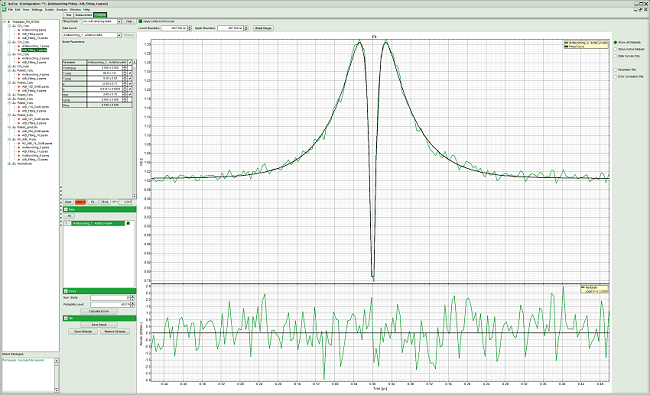Simplify data acquisition and analysis for quantum correlation and coincidence counting applications with QuCoa
 QuCoa is an integrated solution for data acquisition and analysis using the unique T2 time-tagging mode of PicoQuant's TCSPC electronics.
QuCoa is an integrated solution for data acquisition and analysis using the unique T2 time-tagging mode of PicoQuant's TCSPC electronics.
PicoQuant has released the QuCoa software package, an integrated solution for data acquisition and analysis using the unique T2 time-tagging mode of PicoQuant's TCSPC electronics. QuCoa is aimed at research areas relying on coincidence detection such as Hanbury-Brown-Twiss setups to study single photon sources (g(2) / antibunching), quantum key distributions (QKD), general quantum optics or the study of entanglement using Hong-Ou Mandel setups (HOM). The software offers special analysis routines for coincidence correlations as well as for coincidence counting applications.
The QuCoa software features one of the fastest software correlators on the market for coincidence correlation, which permits to correlate the absolute arrival times of photons in real time. This allows, for example, assessing the quality of an antibunching curve already during the measurement. The g(2)(0) value and count rates on all detectors are continuously calculated and displayed. Several established models such as single emitter with or without shelved state or pulsed excitation based on exponential decays, including the influence of the limited detector resolution as well as correlated and uncorrelated background can be fitted to the measured data. The fitting models support both pulsed and cw excitation.
The QuCoa software also provides a unique, easy to use event filter feature for coincidence counting applications. Filters can be constructed via a simple and intuitive graphical user interface which permits combining detection channels and marker signals in a user-defined time window using logical operations (AND, OR, NOT). The filters can be applied both during data acquisition and offline analysis mode. By defining time gates, the user can restrict coincidence detection to specific time ranges.